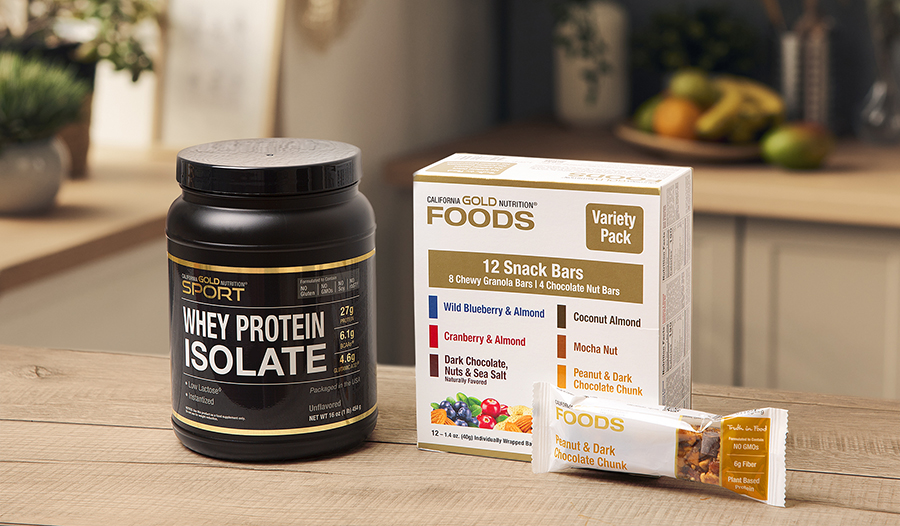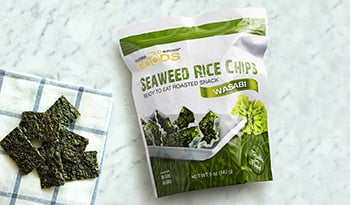6 Tasty, Healthy Snacks to Keep You Energized Throughout the Day
DISCLAIMER:This blog does not intend to provide diagnosis...
- In this article:
- Why You Need Snacks
- How to Plan a Healthy Snack
- My Favorite Easy, Energizing Snacks
- Takeaway

We’ve all heard how important it is to eat three well-balanced meals per day. No doubt, balanced meals are the cornerstones of healthy eating. But commonly, we overlook or under-prioritize snacks when it comes to building a nutritious, well-rounded style of eating.
Snacks are important for keeping our energy up throughout the day. And when they are thoughtfully planned, they help us meet our nutrient needs.
Let’s take a closer look at why snacks deserve more attention for the role they play in a healthy diet. We’ll discuss how to build a balanced snack and I’ll suggest some of my favorite, easy snack ideas that work for even the busiest schedules.
Why You Need Snacks
Snacks serve many important roles in a healthful diet. Well-planned, intentional snacks:
- Help you stay satisfied throughout the day. If you only eat three meals a day, you’ll likely go five to six hours between meals, sometimes longer. This would leave most feeling uncomfortably hungry.
- Help you meet your nutrient requirements each day.
- Serve as pre-and post-exercise nutrition.
- Help maintain proper blood sugar levels.
- Bring enjoyment—who doesn’t look forward to a nice afternoon snack?
How to Plan a Healthy Snack
Planning a healthy, balanced snack that energizes you through the late-morning and afternoon slumps is easy when you know what to include.
Well-planned snacks contain:
- At least two of the three macronutrients—carbohydrates, fat, and protein
- Fiber
- A variety of vitamins and minerals
- Few, if any, refined or added sugars
I also recommend including fruit or veggies in every snack. Most of us know we are supposed to get five to nine servings of fruits and vegetables daily. Snacks are a great opportunity to throw in some extra produce towards that goal!
My Favorite Easy, Energizing Snacks
The possibilities for high-quality snacks are endless, with countless choices you can buy or quickly make at home. Here are some of my top picks for healthy snacks that will keep you energized throughout your day.
1. Nut (or Seed) Butter and Produce
Nut or seed butter is a versatile, nutrient-dense snack option that compliments both sweet and savory foods. Made from nuts and seeds, including peanuts, almonds, sunflower seeds, and pumpkin seeds, these “butters” pack protein, healthy fats, fiber, and a variety of micronutrients into a small and convenient package that can be used in so many ways.
One of the best, most nutritious ways to enjoy nut or seed butter is by pairing it with fruit or veggies. Dip an apple in peanut butter, spread some sunflower butter on a banana, enjoy almond butter with celery stalks, or try layering pumpkin seed butter on carrot sticks.
All of these snack options provide a good balance of nutrients. And you can add more ingredients if you want a higher volume snack. Try topping your celery and almond butter with raisins for “ants on a log,” or serve your banana and sunflower butter on a piece of whole-grain toast.
2. Bars
I keep a variety of bars on hand at home and in my diaper bag and car, so I am never without a snack. While I always try to include whole foods, like produce, in my snacks, sometimes the convenience of a bar wins out. Luckily, there are many types of bars available that provide a great balance of essential nutrients and are light on sugar.
Fruit and nut bars come in lots of flavor combinations. I enjoy them because many are made with simple ingredients, like a variety of nuts and seeds, and dried fruit. This type of bar usually contains less protein, which makes them great for kids, but they work for adults as well. Fruit and nut bars tend to be higher in healthy fats from the nut and seed base, and carbs from the dried fruit.
When choosing which fruit and nut bars are right for you, keep an eye on the “added sugar” line of the nutrition facts panel. Everyone’s needs are different, but as a rule of thumb, I suggest choices that provide fewer than 5 grams of added sugar per serving.
Protein bars also make a great snack. Like with fruit and nut bars, I recommend options that contain fewer than 5 grams of added sugar and are limited in sugar alcohols, which you will see listed on the nutrition facts panel as well. While these “sugars” are lower in calories than regular sugar, they are known to cause digestive upset, so it’s best to minimize your intake.
Depending on your energy needs, you may want to enjoy a piece of fruit with your protein bar to incorporate some carbs. If you prefer to limit carbs but want more food volume, you could easily add a handful of raw veggies on the side.
3. Protein Shakes
Protein is the most satiating nutrient. When you consume protein, you are more likely to feel full and satisfied longer than if you ate an equal amount of fat or carb. Protein is also essential to all tissues in your body, including muscle, and plays a role in fluid and pH balance.
There are many types of protein drinks on the market. Some are already prepared and ready to drink, others come as protein powder to make your own shake or smoothie at home. Either way, a protein drink makes for an easy, convenient, and nutritious snack.
Most protein drinks and powders are modest in carb and fiber content, so consider pairing your protein shake with carbohydrate- and fiber-rich foods for a more energizing snack. For example, you could pair a ready-to-drink shake with fresh or dried fruit, or add protein powder to a smoothie packed with fresh or frozen fruits and veggies of your choice.
Both of these options are balanced snacks that provide essential protein, fiber, and carbohydrates. As an alternative to protein powder, you could try collagen powder in a smoothie or quick shake to add protein and nutrients that enhance hair, nail, and skin health.
4. Cheese and Crackers
We aren’t reinventing the (cheese) wheel here—this duo has been a trusty snack for generations.
Cheese and crackers make a great pair for a few reasons. First off, combining these two food items creates a good balance of protein, fat, carb, and fiber, especially if you choose high-fiber crackers. And with a world of options, you can rotate through a variety of cheeses and crackers to meet your taste preference on any given day.
For a high-quality snack, choose a whole grain or other high-fiber crackers. Remember, fiber is a satiating nutrient, so the more fiber you get in a snack, the more filling it is likely to be.
To add some color and nutrient density to the snack, slice up an apple or enjoy a handful of baby carrots alongside. You could even make a mini charcuterie board and add lean deli meats, like ham, roast beef, or turkey.
5. Parfaits
Another endlessly customizable snack, parfaits offer a nice balance of all three macronutrients and include many vitamins and minerals as well.
Start with your yogurt of choice—dairy, goat, or coconut all work. However, keep in mind that many of the plant-based yogurts available, like almond, oat, and coconut, are typically very low in protein, making them slightly less ideal for a snack. If you opt for a plant-based yogurt, incorporate protein into the snack in a different way, like mixing a scoop of collagen into the yogurt or adding extra nuts and seeds as a topping.
Top your yogurt with fresh fruit, which adds fiber and other nutrients. And load on some crunchy toppings, like granola, nuts, and seeds, for added flavor and texture.
6. Canned Tuna
When it comes to snack foods, canned tuna may not be the first thing that pops into your mind. But tuna is an excellent, protein-packed snack option.
Seasoned tuna, often sold in convenient pouches, is perfect over whole-grain crackers or cucumber slices. Or mix plain tuna with avocado mayo and diced veggies of your choice to make your own tuna salad.
Canned salmon is another similarly nutritious option if you prefer it instead of tuna. Not only do these fish options pack a hearty dose of protein, but they also provide essential omega-3 fats, which may offer anti-inflammatory and heart health benefits.
Takeaway
Creating snacks that energize you throughout the day doesn’t have to be labor-intensive or require a pantry full of ingredients. Be sure to combine at least two of the three macronutrients—carbs, fat, and protein—in your snack, incorporate produce, and watch for excess added sugars in bars, and you’ll be well on your way toward building balanced snacks that keep you on your “A” game all day long.

 By Melissa Rifkin, MS, RDN, CDN
By Melissa Rifkin, MS, RDN, CDN


